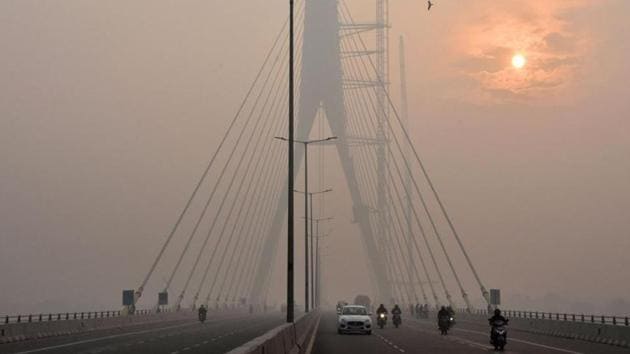Air pollution cuts Indians’ life expectancy by 5.2 years: Report
India is the second most-polluted country globally after Bangladesh, while Nepal, Singapore and Pakistan are the other top countries with dirty air.
Pollution levels in India shave off 5.2 years from the life expectancy of the average Indian and it most acutely hits people living in the Indo-Gangetic plains, according to an assessment by the Energy Policy Institute at the University of Chicago, which also showed that the situation had slightly improved between 2016 and 2018.

India is the second most-polluted country globally after Bangladesh, while Nepal, Singapore and Pakistan are the other top countries with dirty air. The authors use an air quality life index (AQLI), which takes particulate air pollution and determines the hit it has on life expectancy.
According to the AQLI, India’s yearly average particulate pollution concentration of 63.2 ug/m3 in 2018 reduced life expectancy of the average Indian by 5.2 years. The life expectancy lost in 2016 was 6.1 years when the particulate pollution – which is linked to diseases affecting the lungs and heart – was at 71ug/m3.
Also read: The interplay between the pandemic and pollution | Analysis
In 2018, Lucknow’s (the most polluted district in the country) residents were exposed to an average annual PM 2.5 concentrations of 114.6 micrograms per cubic metres which is likely to cut short life expectancy by 10.3 years compared.
That makes Lucknow the most polluted district in the country followed by 13 other districts, all in Uttar Pradesh.
The National Capital Territory of Delhi is the 15th most-polluted region in the country as per the analysis, which relies on satellite data. The average PM 2.5 concentration was 106 micrograms per cubic metres which can lead to loss of 9.4 life years compared to if Delhi had met the WHO guidelines for air quality.
The analysis did not include figures from 2019 and 2020.
The report, released in India, Pakistan and Bangladesh on Tuesday evening, showed air pollution problem that was severe in India in the late 90’s only worsened further in recent years with an estimated life expectancy loss of 3.4 years in 1998, 4.8 years in 2010 and 6.1 years in 2016.
China, however, stands out as a success story as per the data. Singapore, China and India were the three most polluted countries in 1998 with the Chinese losing 3.6 years of life to pollution but by 2018, China was the seventh most polluted and had improved its life expectancy by 1.3 years. Singapore has also improved.
China declared a “war against pollution” in 2013 with some aggressive reforms. Since then, three-quarters of the world’s reductions in pollution have come from China and it has reduced PM 2.5 pollution by nearly 40% during the period according to the analysis.
“Though the threat of coronavirus is grave and deserves every bit of the attention it is receiving— perhaps more in some places—embracing the seriousness of air pollution with a similar vigour would allow billions of people around the world to lead longer and healthier lives,” said Michael Greenstone, the Milton Friedman distinguished service professor in Economics and creator of the AQLI along with colleagues at the Energy Policy Institute at the University of Chicago (EPIC).
“The reality is, no shot in the arm will alleviate air pollution. The solution lies in robust public policy. The AQLI tells citizens and policymakers how particulate pollution is affecting them and their communities and can be used to measure the benefits of policies to reduce pollution.”
Over 20 years, India’s annual PM 2.5 levels have increased by 42%, taking 1.8 years off the life of the average resident.
A quarter of India’s population is exposed to air pollution concentrations not recorded in any other country, with 248 million people in north India on track to lose more than 8 years of life expectancy if the same pollution levels persist.
There is also emerging evidence that air pollution aggravates Covid-19 complications and increases mortality.
“In northern Italy which is highly polluted covid 19 mortality was 12% compared to southern Italy where it was 4.5 %. There was also a study published by Harvard University which said even with a 1 microgram per cubic metre increase in PM 2.5, covid 19 mortality goes up but it has to be long term exposure to air pollution. These two are landmark studies. Even during the SARS epidemic in 2003 mortality was higher in polluted areas, even during the Spanish Flu in 1918 mortality was higher around coal plants. So, there is a clear link between air pollution and covid 19 mortality and morbidity. This is to do with how air pollution affects the airways and immune system of the lungs,” said Dr GC Khilnani, PSRI institute of critical and pulmonary and critical and former and head of pulmonary medicine at AIIMS.
Get Current Updates on India News, Lok Sabha Election 2024 live, Elections 2024, Election 2024 Date along with Latest News and Top Headlines from India and around the world.



